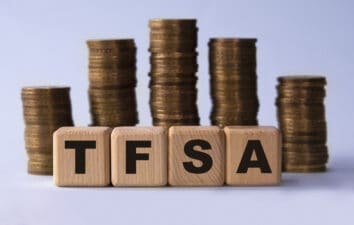Retirees are searching for TSX investments that can generate steady passive income to complement work and government pensions. Stocks have enjoyed a nice rebound in 2024, but some top TSX dividend payers still trade at reasonable prices and offer high yields.
Enbridge
Enbridge (TSX:ENB) raised its dividend in each of the past 29 years. That’s a solid track record which is expected to continue as revenue and cash flow grow.
Enbridge completed its US$14 billion acquisition of three natural utilities in the United States in 2024. The businesses should provide a nice boost to cash flow in 2025. Enbridge is also working on a $24 billion capital program to drive growth in the coming years.
The stock is up about 18% in the past six months, largely driven by anticipated and actual interest rate cuts in Canada and the United States. Enbridge uses debt to fund part of its growth program, so lower borrowing costs will reduce debt expenses and can free up more cash for distributions. A pullback is expected after the big run, but Enbridge should still be a solid buy-and-hold income pick.
Investors who buy ENB stock at the current price can get a dividend yield of 6.3%.
BCE
BCE (TSX:BCE) has been a popular stock among retirees for decades due to the reliable and generous dividend payments. In the past two years, however, the stock had a rough ride, falling from $74 in 2022 to as low as $43. At the time of writing, BCE trades near $46, so it isn’t too far off the multi-year low it hit in recent months.
Investors shouldn’t expect a big rebound in the near term, but cuts to interest rates in Canada will reduce interest expenses on the debt load in the coming months and through next year. In addition, BCE has an agreement in place to sell its stake in Maple Leaf Sports and Entertainment (MLSE) for $4.7 billion. The deal is scheduled to close in 2025 and will provide a good cash infusion to shore up the balance sheet. This, along with lower interest rates, should provide support for the stock.
BCE expects to deliver 2024 financial results that are largely in line with last year. Investors might not get a dividend increase for 2025, but the stock currently provides a yield of 8.6%. At the very least, the distribution should be safe.
Bank of Nova Scotia
Bank of Nova Scotia (TSX:BNS) trades near $73 per share at the time of writing. The stock is up from around $56 at this time last year, but is still down from the $93 it hit in the first part of 2022.
Soaring interest rates in 2023 and 2023 caught businesses and households off guard. Those with too much debt have struggled to cover the jump in interest payments. This resulted in a rise in provisions for credit losses (PCL) at Bank of Nova Scotia. In fiscal Q3 2024, the bank set aside roughly $1 billion to cover loans at risk of default.
The Bank of Canada is now cutting interest rates to avoid driving the economy into a recession. Lower rates will ease the pressure on troubled borrowers and should lead to reduced PCL at the banks in the coming months, as long as the economy holds up and unemployment doesn’t surge.
Near-term volatility should be expected, but investors who buy BNS stock at the current level should do well over the long run and can get a 5.8% dividend yield right now.
The bottom line on TSX stocks with high yields
Enbridge, BCE, and Bank of Nova Scotia pay attractive dividends that should be safe. If you have some cash to put to work in a portfolio focused on passive income, these stocks deserve to be on your radar.








